Citric acid
If rust has formed on the surface of the toilet recently, you can deal with it using citric acid, which every housewife has in stock.
You will need 2-3 packets of citric acid and a brush for cleaning. In no case should you use metal brushes and sponges, as they lead to the formation of scratches and pores, which will accumulate stubborn dirt in the future.
- First, if possible, remove water from the toilet;
- then pour powder into it;
- then you need to close the lid and leave the product for 3-4 hours (it may take longer to remove deeply ingrained rust);
- then you need to rinse off the residue and thoroughly rub the remaining stains with a brush to remove plaque.
See how to get rid of the smell in the washing machine.
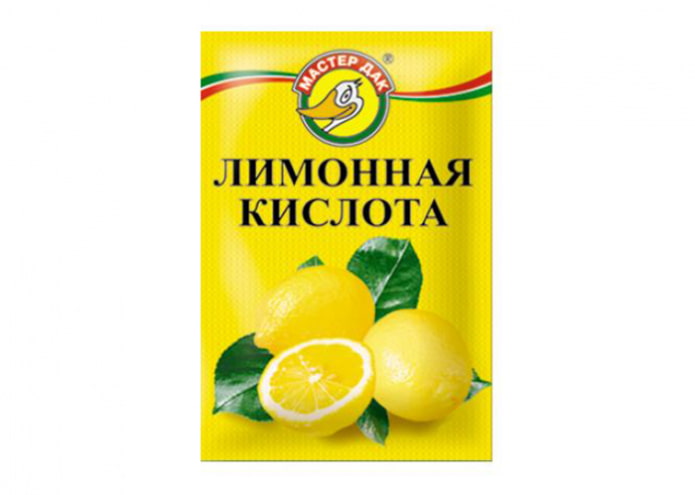
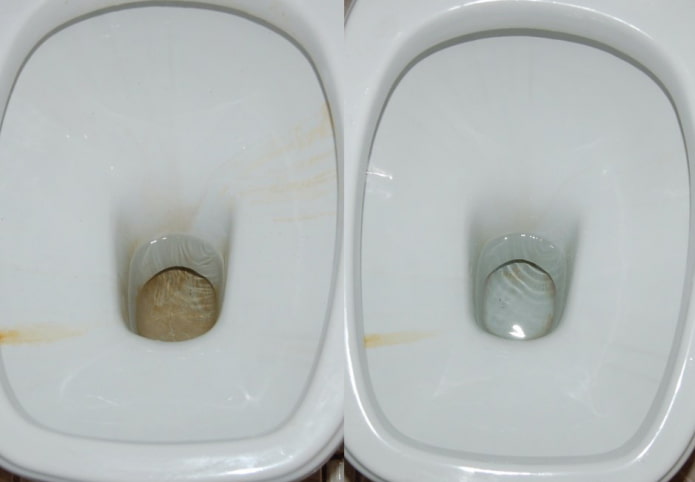
Lemon with vinegar
If the first method works with light dirt, then the combination with vinegar will help to defeat more complex rust. To restore the cleanliness of the toilet at home, take ordinary 70% vinegar and a packet of citric acid. Then follow the instructions:
- Pour 1/3 cup of table vinegar into a spray bottle.
- Pour two packets of citric acid into a dry toilet.
- Then spray the vinegar over the surface. The reaction of these two substances will cause the powder to foam.
- The mixture must be left for 4 hours. During this time, the rusty plaque will become soft and can be easily removed with a brush.
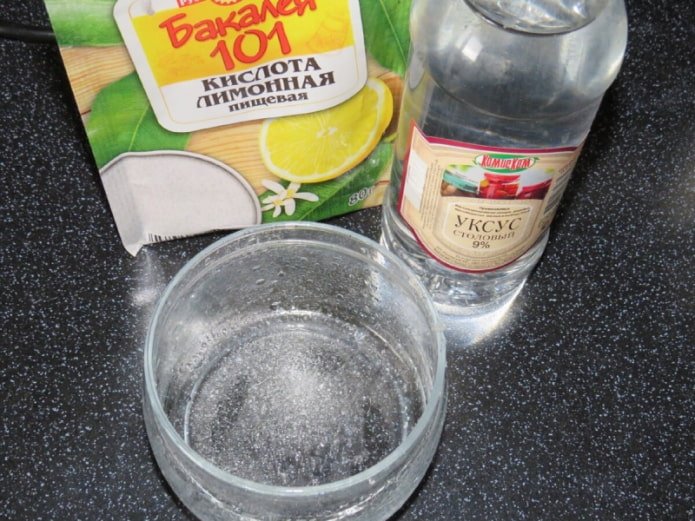
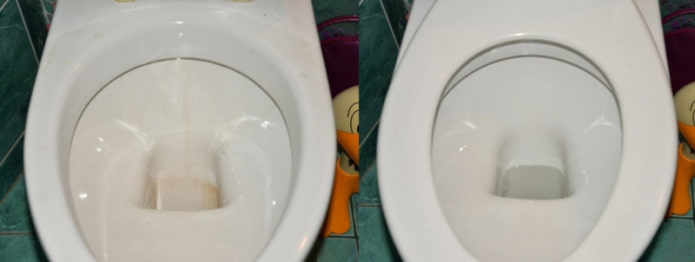
Toothpaste
Effectively whitens not only teeth, but also a rusty toilet. Choose only toothpaste with a whitening effect, you can buy an inexpensive one specifically. The instructions are very simple:
- Squeeze the contents of the tube onto the dirty areas;
- spread evenly over the entire surface and let it soak for 5-10 minutes;
- rub with a brush and drain several times.

Soda and vinegar
With the help of these substances, you can quickly get rid of rusty stains. Choose any of the methods you like:
- Bring 1 cup of table vinegar to a boil. While it is still hot, add soda. Apply the hot mixture to the rusty areas. After 2-3 hours, flush the toilet with running water.
- Pour a small amount of water into the soda and mix thoroughly to form a homogeneous paste. Apply the mixture to the toilet bowl and leave for an hour. Pour vinegar into the spray bottle and wet the walls with it. When the chemical reaction is over and the mixture stops hissing, flush the water from the tank.
In both cases, you can treat the toilet with a soap solution after the procedure. Any liquid soap will do for its preparation.
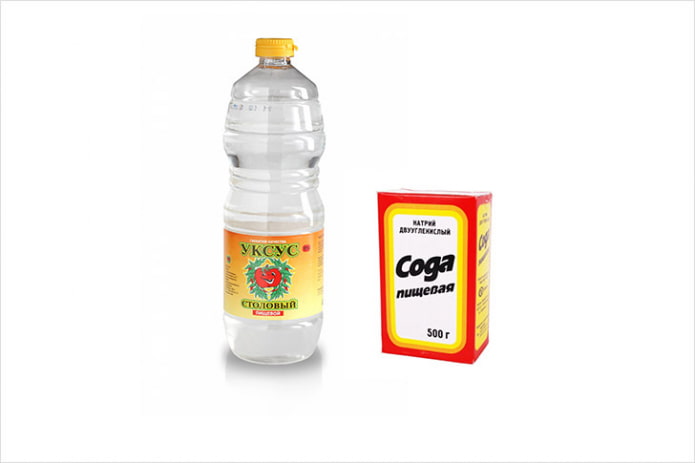
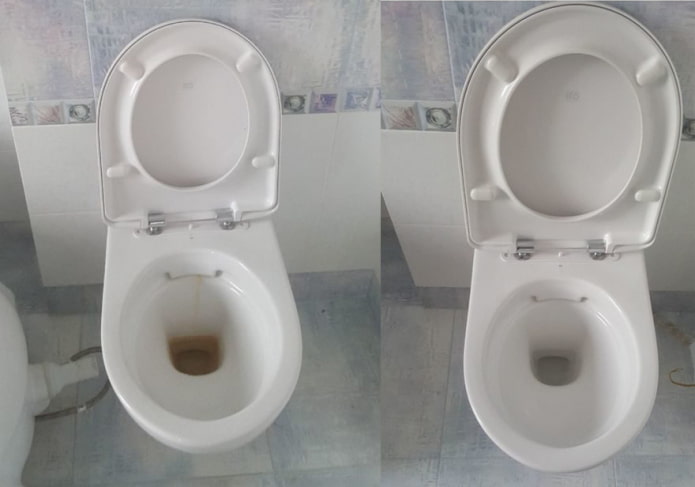
Ammonia
The downside of this method is the sharp and unpleasant smell. But this does not reduce its effectiveness in the fight against rust. For more difficult stains, I recommend adding hydrogen peroxide in a ratio of 1 to 5 (1 part peroxide). So, the algorithm of actions is as follows:
- Damp a sponge or rag in the resulting ammonia solution;
- Gently blot the rust stains;
- Leave for about 1 hour so that the product is thoroughly absorbed;
- Rinse thoroughly with water and scrub with a brush.
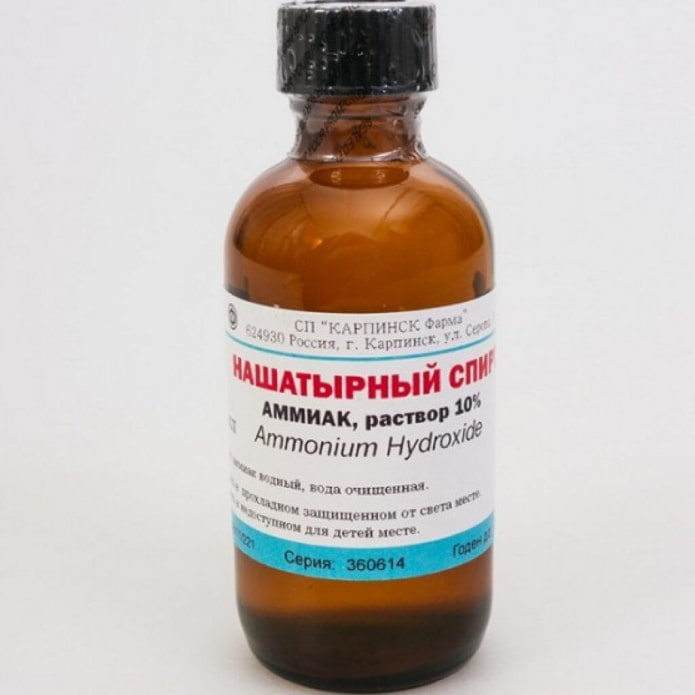
Coca-Cola
Everyone’s favorite drink will come in handy here too. Due to the content of orthophosphoric acid, Coca-Cola can easily cope not only with rusty deposits, but also with limescale.
- First, pump out the water from the toilet.
- Pour in 2 liters of cola and wait 1 hour.
- Flush and enjoy the result.
If the stains are old, you will have to repeat the procedure.
Electrolyte
If the walls of the toilet have not just lost their whiteness, but persistent stains have formed, then electrolyte will help to correct the situation. The substance, which is the most important component of the car battery, contains sulfuric acid. It actively interacts with oxides and salts.
Since the electrolyte is poisonous, be sure to use protective accessories during cleaning. You will need not only gloves and a face mask, but also a respirator. It is necessary to protect the respiratory system not only because of the unpleasant smell, but also because inhaling the smallest particles of electrolyte is dangerous to health.
The composition applied to contaminated areas immediately triggers a chemical reaction. The electrolyte is washed off after 15 minutes, if necessary, the remaining rust can be removed with a brush.
Since the cleaning agent is toxic, it is recommended to use it only if the layer of rust is very thick, and there is no money to buy high-quality household chemicals.
You should not use the electrolyte if the toilet is connected to the sewer system with polypropylene pipes.
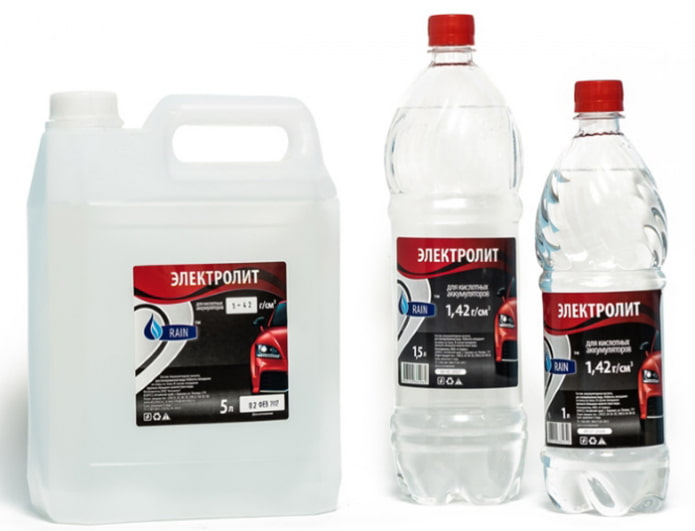
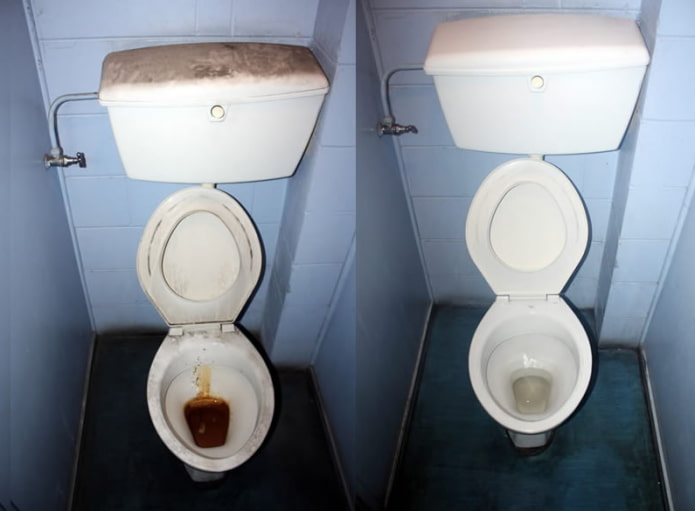
Domestos
This product allows you to easily clean the toilet. The product does not contain chlorine, and the main substance that has a cleaning effect is hydrochloric acid. Unlike alkaline compounds, the acid-based gel not only helps in the fight against rust or plaque, but also kills bacteria.
The cleaning product works even under water. Due to its thick consistency, the gel is used economically and is evenly distributed over the surface during cleaning.
To remove rust from the toilet and disinfect it, follow the instructions on the package or below:
- apply the product to the entire surface, not forgetting the areas under the rim;
- leave for 30 minutes;
- then clean with a brush and rinse with water.
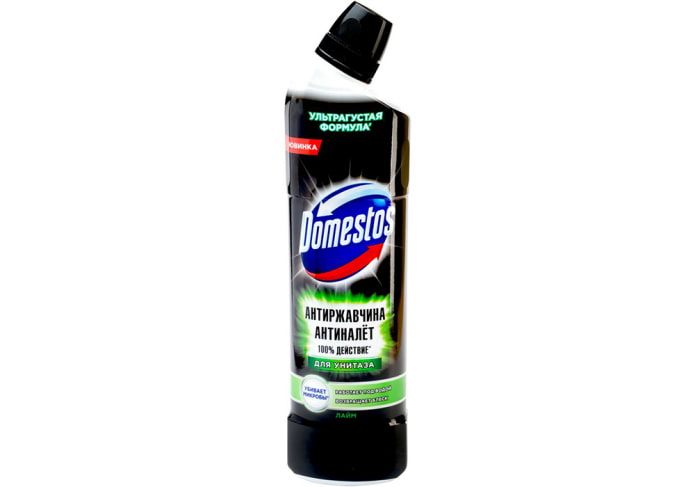
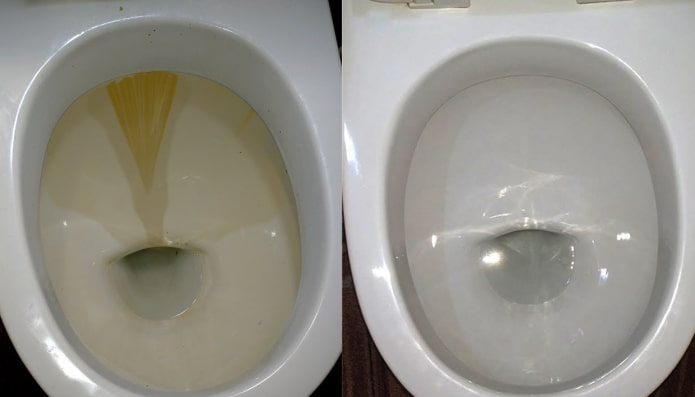
Cillit BANG
The advantage of liquid detergent is that it does not scratch the surface. Cillit BANG gel restores the original cleanliness of treated surfaces, removing plaque and rusty stains from hard water. You can wash away rust of any complexity with an acidic detergent.
Concentrated chemicals can corrode the chrome coating, before use it is better to test the effect of the product on a small area or do not apply it to these parts.
Step-by-step cleaning instructions:
- Apply the gel to the rust stains for just 1 minute;
- Rinse the treated area thoroughly and wipe it with a napkin;
If the rusty coating is very persistent and does not come off the first time, the procedure must be repeated.
Work with an aggressive cleaning agent in gloves and a respirator. Before cleaning, be sure to read the instructions and safety precautions. Due to its economical consumption, this product will last for a long time.
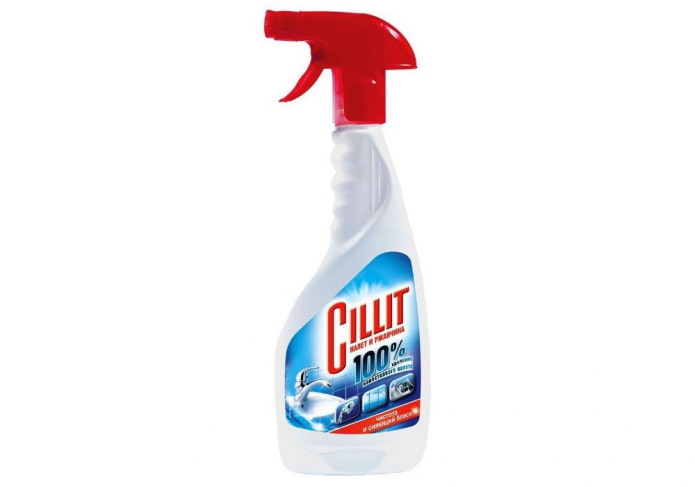
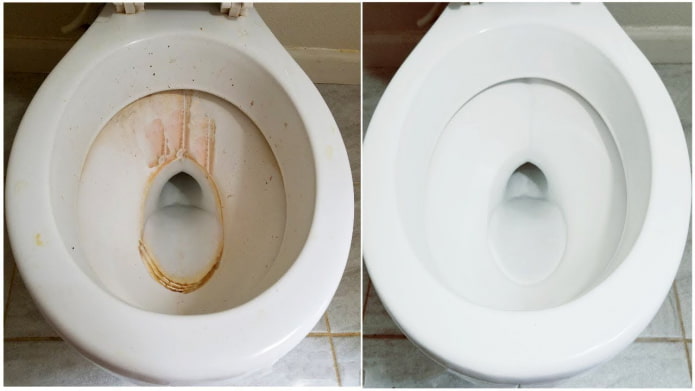
Sarma
The powder not only effectively fights rust plaque, but also eliminates bacteria.
Step-by-step instructions:
- The powder must be sprinkled on the areas with plaque (on damp areas the product immediately changes color to blue);
- Then you need to thoroughly rub the treated areas with a brush or sponge.
- Rinse off the remaining powder with running water several times.
The advantages of the cleaning product include its suitability for cleaning not only in the toilet and bathroom, but also in the kitchen. Such household chemicals remove rust and grease, have a bleaching effect. Thanks to its versatility and pleasant rich aroma of freshness, Sarma cleaning powder will definitely find application in the household.
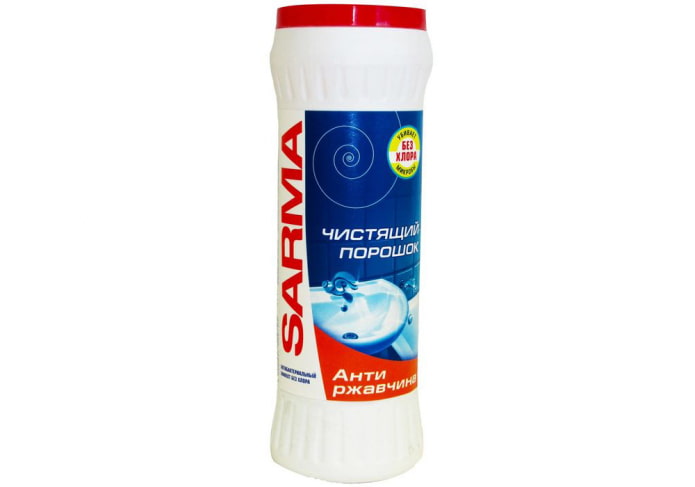
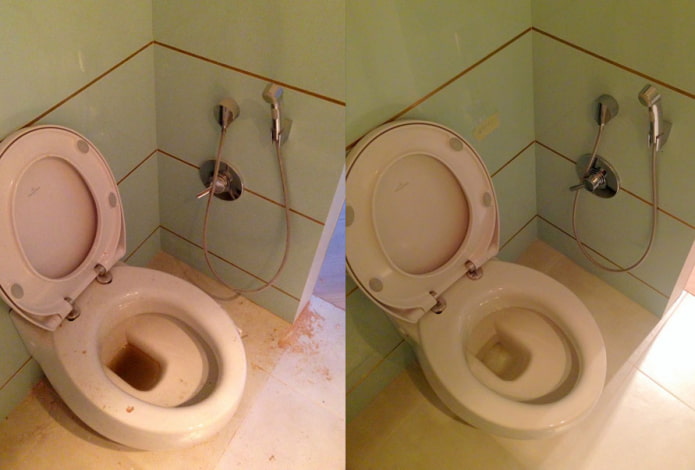
The following video clearly shows the use of powder, and also provides additional recommendations that will help you quickly deal with rust.
After you have managed to clean the toilet, you need to take preventive measures that will not allow rust stains to appear again:
- It is important that the cistern does not leak.
- It is necessary to treat the toilet weekly with any of the above products.
- You can purchase special water softening tablets that are attached to the toilet or placed in the cistern.
- At the first signs of stains, clean the toilet with bleach or vinegar.
Following these recommendations, you will no longer have to worry about cleaning – just use any of the methods.
Now reading:
- Decorative finishing of the hallway and corridor: 50 photos and design tips.
- Butterflies on the wall: 45 photo examples and 4 ideas for creativity
- Country Bedroom: 40 Inspiring Photos and Stylish Design Ideas
- Dark floor in the interior: 65 best photos and ideas for room decoration.
- Elegant Curtains for the Living Room: 70 Photos, Design Ideas and Color Solutions